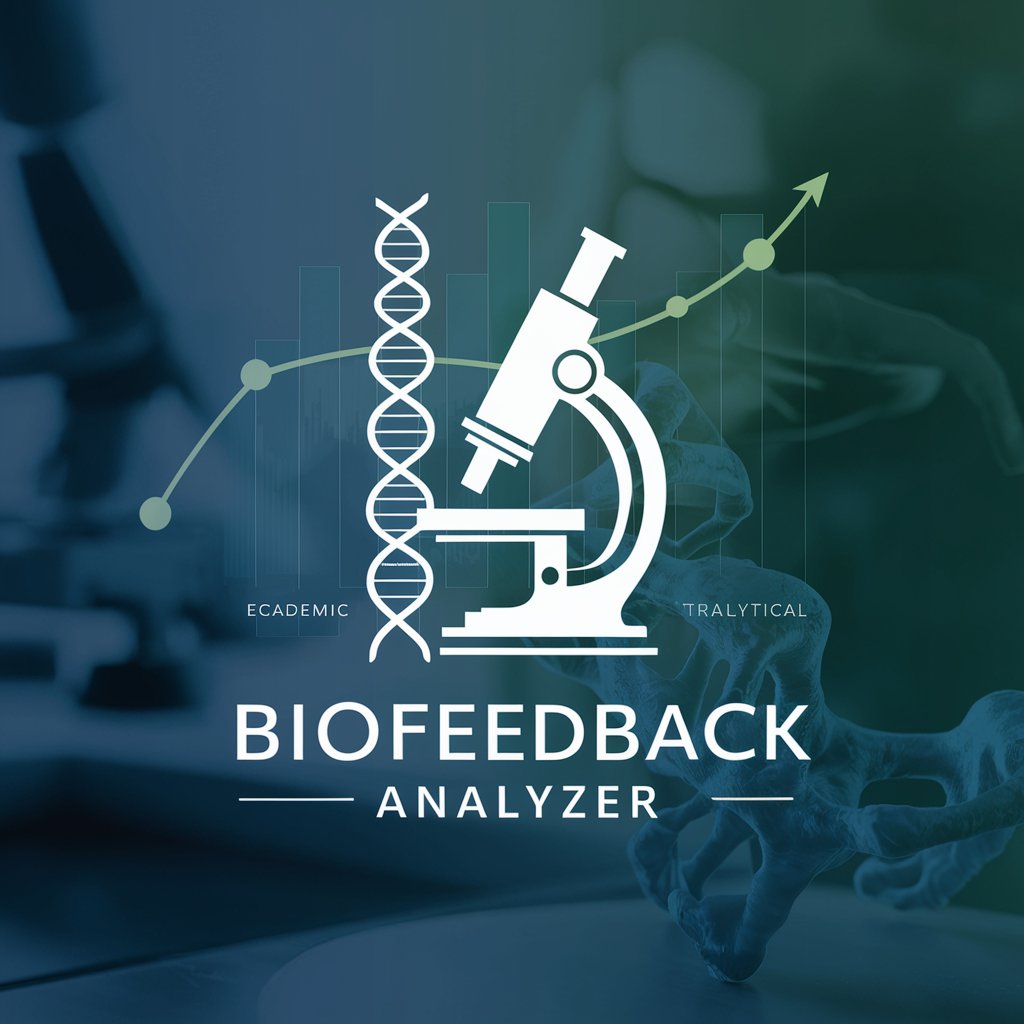BioFeedback Analyzer - Biology Feedback Analysis Tool

Welcome to the BioFeedback Analyzer!
Transform Feedback into Action with AI
Analyze the student feedback for the Biology degree program...
Summarize the recurring themes in the student reviews about...
Identify the top positive and negative points from the student feedback...
Create a visual representation of the key themes in the student feedback...
Get Embed Code
Introduction to BioFeedback Analyzer
BioFeedback Analyzer is specifically designed to analyze and summarize student feedback for university degree programs, with a focus on Biology. It processes unstructured feedback, identifying key themes and presenting these findings in a structured, clear format. This tool is capable of producing summaries that include the principal positive and negative points, areas for improvement, and a list of keywords that describe the student body's overall sentiment. For example, if students frequently mention 'excellent lab facilities' but criticize 'limited course options', BioFeedback Analyzer will highlight these as key positive and negative points, respectively. Powered by ChatGPT-4o。

Main Functions of BioFeedback Analyzer
Theme Identification
Example
Identifies common themes like 'curriculum', 'faculty', 'resources', 'student support', and 'career preparation' from the feedback.
Scenario
In a scenario where students frequently mention experiencing supportive mentoring, BioFeedback Analyzer would classify these mentions under the 'faculty' theme, helping administrators understand this as a strength.
Summarization of Feedback
Example
Summarizes feedback into structured categories: positives, negatives, improvements, and keywords.
Scenario
After collecting semester feedback, it can summarize findings such as the need for more interactive classes, which can be directly used in departmental meetings to discuss curriculum adjustments.
Visual Data Representation
Example
Creates word clouds and other graphical representations to visually depict the most frequently mentioned topics or sentiments.
Scenario
For a departmental review, it could generate a word cloud highlighting 'research opportunities', 'community', and 'outdated equipment' as most mentioned, visually aiding in the prioritization of departmental budgets and focus areas.
Ideal Users of BioFeedback Analyzer
University Administrators
These users benefit from detailed insights into student sentiment, helping them make informed decisions about curriculum changes, faculty training, and resource allocation based on direct feedback.
Academic Researchers
Researchers focusing on educational methodologies or student satisfaction can use detailed analysis of feedback to support their studies and publish findings on the efficacy of educational practices.
Education Technology Firms
Companies that develop educational tools and platforms can use this detailed feedback analysis to refine their products, ensuring they meet the actual needs and improve the academic experience of their users.

How to Use BioFeedback Analyzer
Step 1
Go to yeschat.ai for a complimentary trial, accessible immediately without registration or the need for ChatGPT Plus.
Step 2
Upload or enter the unstructured feedback text from Biology students directly into the tool.
Step 3
Specify the type of analysis you wish to perform, such as identifying key themes, sentiment analysis, or generating word clouds.
Step 4
Run the analysis to process the feedback. Review the summarized points, areas for improvement, and keywords provided by the tool.
Step 5
Use the insights and visual representations generated to make informed decisions about program enhancements or to prepare reports.
Try other advanced and practical GPTs
Manifesteren
Turn Thoughts into Reality with AI

Content Creator for AiLingo
Enhancing Language Learning with AI

professor aiding in thesis
Enhance Your Thesis with AI Expertise

앨런 워커(Alan Walker) - 대화형 AI 비서
AI-powered assistant for your daily needs

Summarise and Word Document Maker
AI-powered document creation and summarization tool

Magic book
Transform Cultivation Novels with AI Magic

Prompt Crocheted
Crafting Artistry with AI

Prefecture Assistant
Streamline your French business journey with AI.

Nara Explorer(tourism in Japan)
Discover Nara with AI-powered guidance.

Minami Alps Explorer
Explore Minami-Alps with AI

福岡入試問題鬼特
Empowering Your Study with AI

Sex Pistols
Empower your punk spirit with AI!

FAQs About BioFeedback Analyzer
What types of feedback can BioFeedback Analyzer process?
BioFeedback Analyzer is designed to process unstructured textual feedback from students regarding their experiences in a Biology degree program.
Can BioFeedback Analyzer generate reports?
Yes, it can generate detailed reports summarizing key positives, negatives, and suggestions for improvement based on the feedback analyzed.
Is BioFeedback Analyzer suitable for real-time feedback analysis?
While primarily designed for batch processing of feedback, BioFeedback Analyzer can handle real-time feedback if integrated into live feedback systems.
How does BioFeedback Analyzer help in academic settings?
It helps educators identify strengths and weaknesses in their programs, providing actionable insights to enhance teaching strategies and curriculum design.
Does BioFeedback Analyzer support multiple languages?
Currently, BioFeedback Analyzer is optimized for English-language feedback, with plans to support additional languages in future updates.
